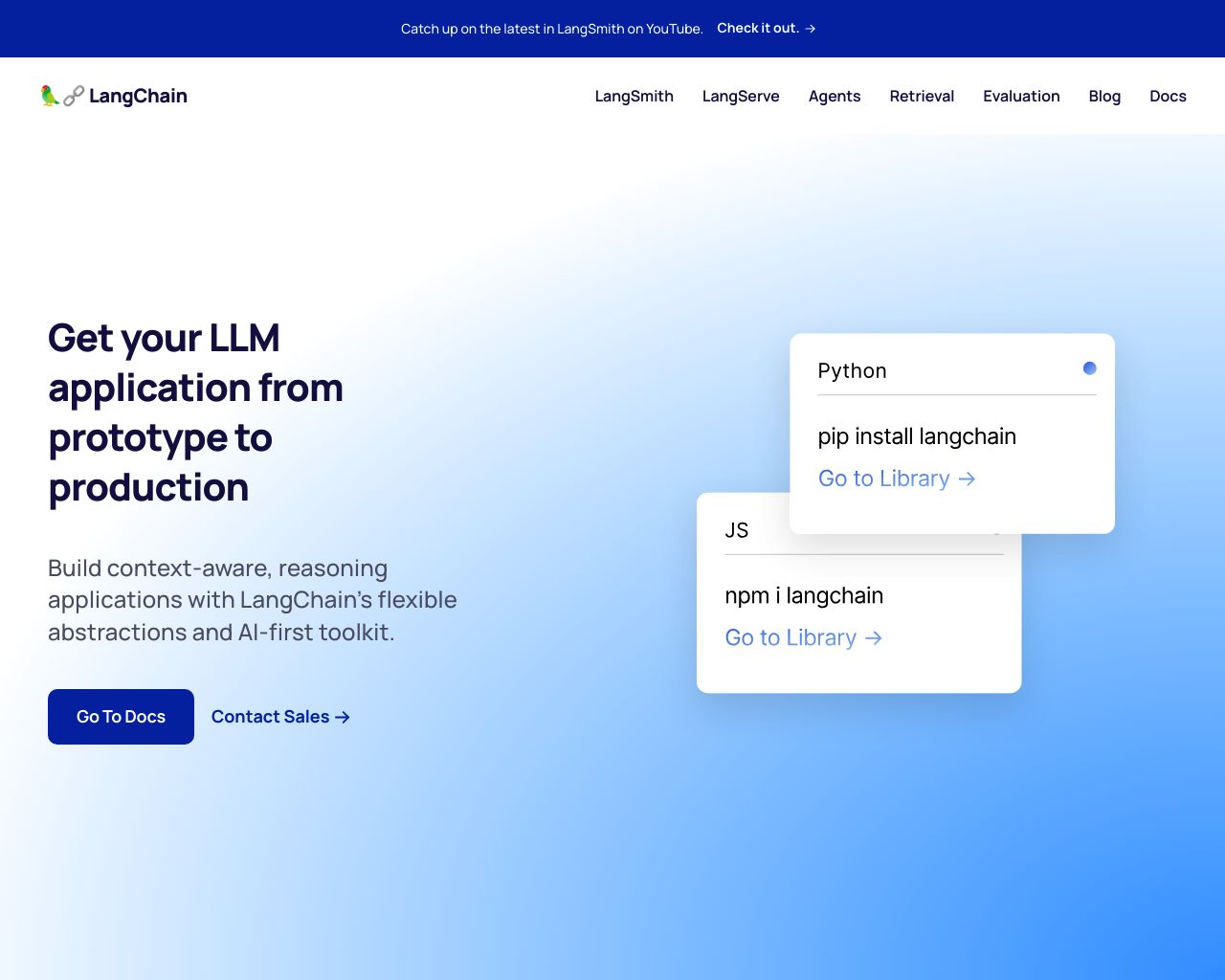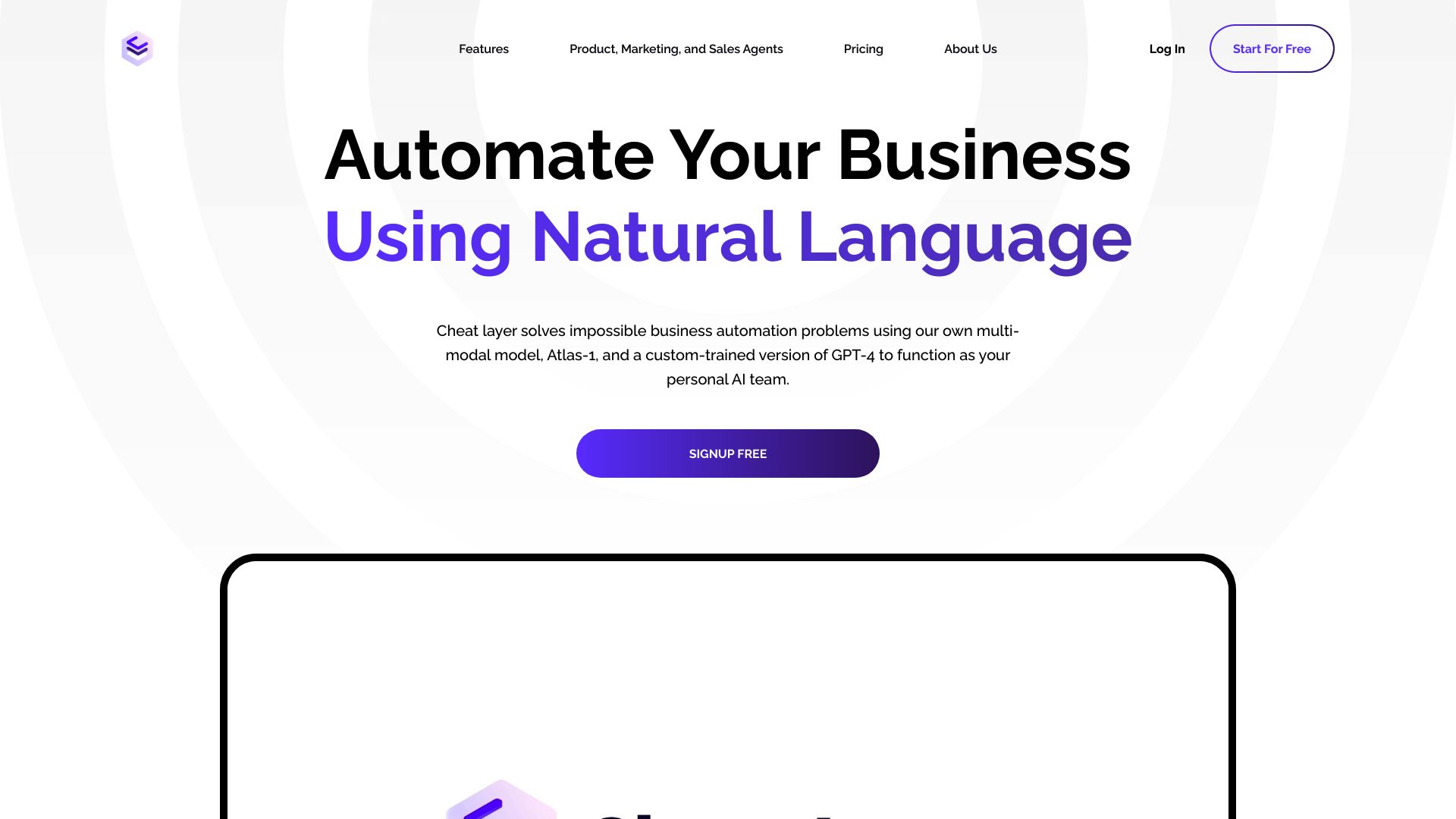LangChain vs. Cheat Layer: Which AI Platform Reigns Supreme?
AI-powered platforms are revolutionizing software development and business automation. LangChain vs. Cheat Layer offer unique approaches to harnessing AI’s potential, but SmythOS emerges as the superior solution. This comparison examines each platform’s strengths and limitations, from LangChain’s developer-focused framework to Cheat Layer’s user-friendly interface.
We’ll explore how SmythOS combines powerful features with intuitive design, making advanced AI capabilities accessible to both technical and non-technical users. Whether you’re a seasoned developer, a business leader, or an AI enthusiast, this analysis will guide you through the key differences and help you choose the best platform for your AI development needs.
LangChain Overview
LangChain revolutionizes the development of AI-powered applications by providing an open-source framework tailored for large language models (LLMs). This platform empowers developers to create sophisticated AI agents, chatbots, and other LLM-driven tools with unprecedented ease and flexibility.
LangChain excels in offering a comprehensive suite of tools for every stage of the LLM application lifecycle. Its modular architecture includes LangGraph for building stateful, multi-actor applications, LangSmith for rigorous debugging and monitoring, and LangGraph Cloud for seamless deployment of production-ready APIs and assistants. These components work in harmony to streamline the entire process from development to deployment.
LangChain revolutionizes the development of AI-powered applications by providing an open-source framework tailored for large language models (LLMs).


Developers praise LangChain for its robust set of libraries and integrations. The platform supports a wide array of third-party tools and APIs, enabling seamless connectivity with popular AI models, databases, and services. This extensive ecosystem allows for the creation of highly customized and powerful LLM applications that can tackle complex tasks across various domains.
Developers praise LangChain for its robust set of libraries and integrations… enabling seamless connectivity with popular AI models, databases, and services.
However, LangChain’s power comes with a steep learning curve. While it offers unparalleled flexibility for experienced developers, newcomers might find the platform’s extensive options and configurations overwhelming. The lack of a visual builder or no-code editor further emphasizes its focus on technical users, potentially limiting accessibility for non-developers.
Despite this limitation, LangChain’s commitment to open-source principles fosters a vibrant community of developers and researchers. This collaborative environment drives rapid innovation and problem-solving, ensuring that LangChain remains at the cutting edge of LLM application development.
Cheat Layer Overview
Cheat Layer offers a powerful business automation solution leveraging AI, specifically a custom-trained version of GPT-4 and their multi-modal model Atlas-1. The platform tackles complex automation challenges using natural language, making it accessible to non-technical users and developers alike.
Cheat Layer’s Project Atlas Framework enables the generation of automations with unlimited complexity through simple language. Users create end-to-end solutions by conversing with the system as if speaking to an engineer. This approach democratizes AI-driven automation, allowing small businesses to compete with larger firms using cost-effective tools.
Cheat Layer’s Project Atlas Framework enables the generation of automations with unlimited complexity through simple language. Users create end-to-end solutions by conversing with the system as if speaking to an engineer.


Key features include Semantic Targets, which use natural language to define automation targets, ensuring longevity and accuracy even when services update their designs. The platform also offers 1-Click Cloud Agents, allowing users to deploy pre-built marketing and sales agents directly from mobile devices. These agents automate processes such as content generation, A/B testing, and lead generation with minimal setup.
Cheat Layer’s Live Mode enables iterative building and deployment of products like apps and landing pages with real-time feedback. The platform includes a no-code interface with a drag-and-drop editor, simplifying automation creation for users without coding knowledge. Additionally, Cheat Layer provides white label solutions, allowing agencies to create and resell custom automation solutions as branded Chrome extensions.
While Cheat Layer offers a comprehensive suite of features, it lacks some capabilities found in other platforms. The absence of a dedicated debug mode, hosted vector database, and specific crawlers for sitemaps or YouTube transcripts may limit its applicability in certain scenarios. However, its focus on natural language interaction and ease of use makes it a compelling choice for businesses looking to rapidly implement AI-driven automation solutions.
Feature Comparison
LangChain and Cheat Layer offer distinct approaches to AI agent development, with notable differences in their core components and security features. LangChain provides a comprehensive framework for building LLM-powered applications, emphasizing flexibility and customization. It offers robust tools like LangGraph for creating stateful, multi-actor applications and LangSmith for debugging and monitoring. However, LangChain lacks a visual builder or no-code editor, which may present challenges for non-technical users.
In contrast, Cheat Layer focuses on accessibility and ease of use, offering a no-code interface with a drag-and-drop editor. This approach democratizes AI automation, allowing even non-technical users to create sophisticated agents. Cheat Layer’s Project Atlas Framework enables natural language-based automation generation, a feature not present in LangChain. However, Cheat Layer appears to have limitations in some advanced features like hosted vector databases and specific crawlers for sitemaps or YouTube transcripts, which LangChain supports through its extensive integration ecosystem.
On the security front, both platforms emphasize best practices, but their implementations differ. LangChain supports OAuth for API authentication and likely includes data encryption as part of its security measures. Cheat Layer’s security features are not explicitly detailed in the available information, potentially indicating a gap in this area compared to LangChain’s more clearly defined security capabilities.
Feature Comparison Table
| LangChain | Cheat Layer | SmythOS | |
|---|---|---|---|
| CORE FEATURES | |||
| Visual Builder | ❌ | ✅ | ✅ |
| No-Code Options | ❌ | ✅ | ✅ |
| Agent Work Scheduler | ❌ | ✅ | ✅ |
| SECURITY | |||
| Constrained Alignment | ❌ | ✅ | ✅ |
| IP Control | ❌ | ❌ | ✅ |
| COMPONENTS | |||
| Huggingface AIs | ✅ | ❌ | ✅ |
| Zapier APIs | ❌ | ✅ | ✅ |
| Data Lakes | ❌ | ❌ | ✅ |
| DEPLOYMENT OPTIONS (EMBODIMENTS) | |||
| Deploy as Webhook | ❌ | ✅ | ✅ |
| Staging Domains | ❌ | ✅ | ✅ |
| Production Domains | ❌ | ✅ | ✅ |
| Deploy as Scheduled Agent | ❌ | ✅ | ✅ |
| DATA LAKE SUPPORT | |||
| Hosted Vector Database | ❌ | ❌ | ✅ |
| Sitemap Crawler | ❌ | ✅ | ✅ |
| YouTube Transcript Crawler | ❌ | ✅ | ✅ |
| URL Crawler | ❌ | ✅ | ✅ |
| Word File Support | ❌ | ✅ | ✅ |
Best Alternative to LangChain and Cheat Layer
SmythOS offers a comprehensive solution that surpasses both LangChain and Cheat Layer in functionality and ease of use. Our platform combines the best aspects of both competitors while addressing their limitations, providing users with a powerful yet accessible AI agent development environment.
Unlike LangChain’s complex framework that requires extensive coding knowledge, SmythOS features an intuitive drag-and-drop interface. This visual builder empowers users of all skill levels to create sophisticated AI agents without writing a single line of code. We’ve streamlined the development process, making it up to 99% faster than traditional methods.
SmythOS features an intuitive drag-and-drop interface. This visual builder empowers users of all skill levels to create sophisticated AI agents without writing a single line of code.
While Cheat Layer focuses on simplifying automation, SmythOS takes it a step further by offering a more extensive feature set and unlimited use cases. Our platform supports integration with a wide range of AI models, APIs, and data sources, allowing users to build agents for virtually any task imaginable. From customer service chatbots to complex data analysis tools, SmythOS provides the flexibility to tackle diverse challenges across industries.
Unlike our competitors, SmythOS offers a complete ecosystem for AI agent development, deployment, and management. We provide hosted vector databases, advanced scheduling capabilities, and robust security features like IP control and OAuth authentication. These enterprise-grade tools ensure that your AI solutions are not only powerful but also scalable and secure. With SmythOS, you can confidently deploy AI agents as APIs, webhooks, scheduled tasks, or even as ChatGPT plugins, opening up a world of possibilities for AI-driven innovation in your organization.
SmythOS offers a complete ecosystem for AI agent development, deployment, and management… ensuring that your AI solutions are not only powerful but also scalable and secure.
By choosing SmythOS, you’re not just selecting an AI agent builder – you’re investing in a future-proof platform that grows with your needs. Our commitment to continuous improvement and cutting-edge features ensures that your AI initiatives will always have the support they need to thrive in an ever-evolving technological landscape.
Conclusion
LangChain and Cheat Layer offer powerful tools for AI development, each with unique strengths. LangChain excels in providing a flexible, open-source framework for experienced developers, while Cheat Layer focuses on accessibility with its no-code interface. However, SmythOS emerges as the superior choice, combining the best of both worlds.
SmythOS’s drag-and-drop interface rivals Cheat Layer’s ease of use, making AI development accessible to non-technical users. Yet, it doesn’t sacrifice the power and flexibility that LangChain offers. Our platform supports a vast array of AI models, APIs, and integrations, allowing for sophisticated agent creation without the steep learning curve.
Unlike LangChain and Cheat Layer, SmythOS provides a comprehensive suite of features including hosted agents, multimodal capabilities, and advanced deployment options. Our platform’s ’Create Once, Deploy Anywhere’ approach sets it apart, allowing users to seamlessly integrate AI agents across various environments and services.
Ready to experience the future of AI development? Explore our diverse range of AI-powered agent templates to jumpstart your projects, or create a free SmythOS account to build unlimited AI agents with no time limit. Unleash the full potential of AI for your business with SmythOS – where innovation meets simplicity.
Last updated:
Disclaimer: The information presented in this article is for general informational purposes only and is provided as is. While we strive to keep the content up-to-date and accurate, we make no representations or warranties of any kind, express or implied, about the completeness, accuracy, reliability, suitability, or availability of the information contained in this article.
Any reliance you place on such information is strictly at your own risk. We reserve the right to make additions, deletions, or modifications to the contents of this article at any time without prior notice.
In no event will we be liable for any loss or damage including without limitation, indirect or consequential loss or damage, or any loss or damage whatsoever arising from loss of data, profits, or any other loss not specified herein arising out of, or in connection with, the use of this article.
Despite our best efforts, this article may contain oversights, errors, or omissions. If you notice any inaccuracies or have concerns about the content, please report them through our content feedback form. Your input helps us maintain the quality and reliability of our information.
